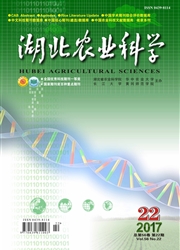

 中文摘要:
中文摘要:
借鉴相关文献对长江中下游五省采用青饲料替代部分精饲料的新生猪饲养方式的社会效益、经济效益和生态效益进行了分析。采用新的生猪饲养方式,在社会效益方面,当精饲料与青饲料的能量替代比例分别为1:1.2和1:1.6时,2015年长江中下游五省合计可以节省的耕地面积分别为132.39万hm-2和108.68万hm-2;在经济效益方面,不仅能够为青饲料的种植户带来较高的经济收入,而且可以增加生猪养殖利润,当精饲料与青饲料的能量替代比例分别为1:1.2和1:1.6时,2015年五省平均生猪养殖利润分别可增加546.68元/头和495.27元/头;在生态效益方面,可在水土保持方面发挥重要作用,同时每年可以减少31.74万t CO排放量、431.83万t CO2排放量和131.37万t C排放量。
 英文摘要:
英文摘要:
Using related literatures for reference, the social, economic and ecological benefits of the new pig feeding mode of green fodder replacing some concentrate feed were analyzed in five provinces of the middle and lower reaches of the Changjiang River. Adopting the new pig feeding mode, in terms of social benefits, when the energy substitution ratio between concentrate feed and green fodder was 1 vs 1.2 and 1 vs 1.6 respectively, in 2015, the arable land saved by five provinces of the middle and lower reaches of the Changjiang River were 1 323.9 thousand hectares and 1 086.8 thousand hectares respectively; in terms of economic benefits, forage growers could get higher income and the profits ofpig farming increased, when the energy substitution ratio between concentrate feed and green fodder was 1 vs 1.2 and 1 vs 1.6 respectively, in 2015, the average increasable hog farming profits offive provinces were 546.68 yuan per pig and 495.27 yuan per pig respectively; in terms of ecological benefits, it could play an important role in soil and water conservation, meanwhile annual emissions of CO, CO2 and C could be reduced by 317.4 thousand tons,4 318.3 thousand tons and 1 313.7 thousand tons respectively.
 同期刊论文项目
同期刊论文项目
 同项目期刊论文
同项目期刊论文
 期刊信息
期刊信息
